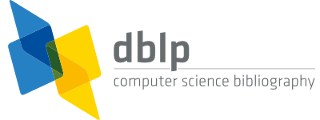


default search action
2nd ASYNC 1996: Aizu-Wakamatsu, Fukushima, Japan
- 2nd International Symposium on Advanced Research in Asynchronous Circuits and Systems (ASYNC '96), March 18-21, 1996, Aizu-Wakamatsu, Fukushima, Japan. IEEE Computer Society 1996, ISBN 0-8186-7298-6

Session 1: High-Speed Design
- Per Torstein Røine:

A system for asynchronous high-speed chip to chip communication. 2-10 - Stephen B. Furber, Jianwei Liu:

Dynamic logic in four-phase micropipelines. 11-16 - Kenneth Y. Yun, Peter A. Beerel, Julio Arceo:

High-performance asynchronous pipeline circuits. 17-28
Session 2: Logic Synthesis
- Toshiyuki Miyamoto, Sadatoshi Kumagai:

An efficient algorithm for deriving logic functions of asynchronous circuits. 30-35 - Jordi Cortadella, Michael Kishinevsky, Alex Kondratyev, Luciano Lavagno, Alex Yakovlev:

Complete state encoding based on the theory of regions. 36-47 - Steven M. Burns:

General conditions for the decomposition of state holding elements. 48-57
Session 3: Architectural Synthesis
- William F. Richardson, Erik Brunvand:

Fred: an architecture for a self-timed decoupled computer. 60-68 - Tony Werner, Venkatesh Akella:

Counterflow pipeline based dynamic instruction scheduling. 69-79 - D. K. Arvind, Vinod E. F. Rebello:

Static scheduling of instructions on micronet-based asynchronous processors. 80-91
Session 4: Formal Methods
- Nozar Tabrizi, Michael J. Liebelt

 , Kamran Eshraghian:
, Kamran Eshraghian:
Dynamic hazards and speed independent delay model. 94-103 - Martin E. Bush, Mark B. Josephs

 :
:
Some limitations to speed-independence in asynchronous circuits. 104-111 - Paul G. Lucassen, Jan Tijmen Udding:

On the correctness of the Sproull counterflow pipeline processor. 112-120
Session 5: Novel Techniques
- Kees van Berkel

 , Arjan Bink:
, Arjan Bink:
Single-track handshake signaling with application to micropipelines and handshake circuits. 122-133 - Masaaki Maezawa

 , Itaru Kurosawa, Yoshio Kameda, Takashi Nanya:
, Itaru Kurosawa, Yoshio Kameda, Takashi Nanya:
Pulse-driven dual-rail logic gate family based on rapid single-flux-quantum (RSFQ) devices for asynchronous circuits. 134-142 - Eckhard Grass, Richard C. S. Morling, Izzet Kale:

Activity-Monitoring Completion-Detection (AMCD): a new single rail approach to achieve self-timing. 143-149
Session 6: Design Automation and Measurements
- Tomohiro Yoneda, Takashi Yoshikawa:

Using partial orders for trace theoretic verification of asynchronous circuits. 152-163 - Rakefet Kol, Ran Ginosar, Goel Samuel:

Statechart methodology for the design, validation, and synthesis of large scale asynchronous systems. 164-174 - Clark Foley:

Characterizing metastability. 175-184
Session 7: Low Power and System Design
- José A. Tierno, Rajit Manohar, Alain J. Martin:

The energy and entropy of VLSI computations. 188-196 - Lars Skovby Nielsen, Jens Sparsø

 :
:
A low-power asynchronous data-path for a FIR filter bank. 197-207 - Jim D. Garside, Steve Temple, Rahul Mehra:

The AMULET2e cache system. 208-217
Session 8: Logic Optimization
- Marco A. Peña, Jordi Cortadella:

Combining process algebras and Petri nets for the specification and synthesis of asynchronous circuits. 222-232 - Tilman Kolks, Steven Vercauteren, Bill Lin:

Control resynthesis for control-dominated asynchronous designs. 233-243 - Peter A. Beerel, Kenneth Y. Yun, Wei-Chun Chou:

Optimizing average-case delay in technology mapping of burst-mode circuits. 244-260

manage site settings
To protect your privacy, all features that rely on external API calls from your browser are turned off by default. You need to opt-in for them to become active. All settings here will be stored as cookies with your web browser. For more information see our F.A.Q.


 Google
Google Google Scholar
Google Scholar Semantic Scholar
Semantic Scholar Internet Archive Scholar
Internet Archive Scholar CiteSeerX
CiteSeerX ORCID
ORCID














